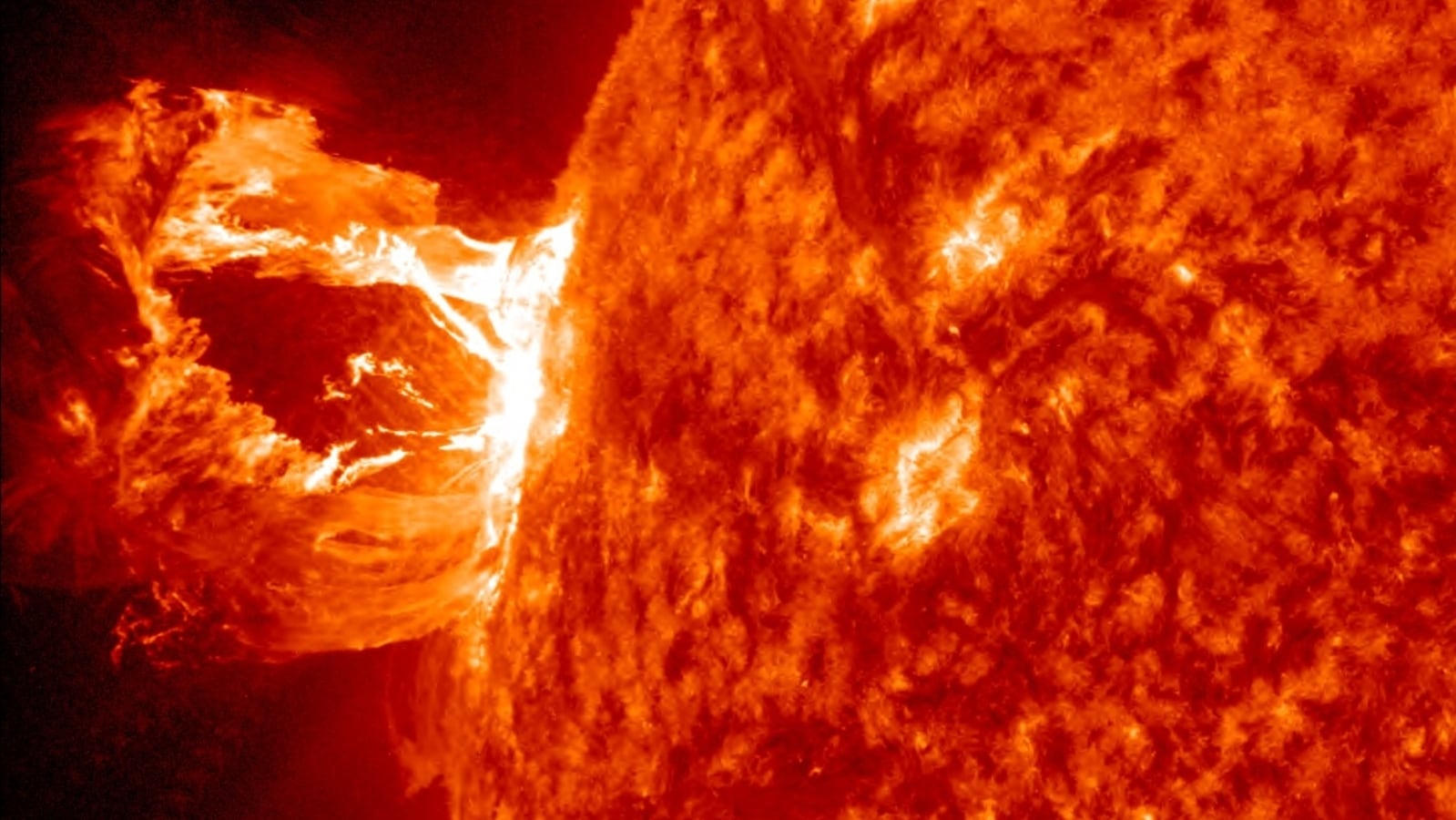SHOCKING! Large chunk breaks off the Sun, creates terrifying vortex; Should we be worried?
In a shocking event, a large mass of the Sun has broken off. This solar material has birthed a vortex in its polar region. Know what its implications can be.






 View all Images
View all ImagesThe Sun has been bursting with incessant solar activity over the recent weeks. Just over the past three days, we have seen multiple solar flare eruptions, solar storms and sunspots which are growing at an alarming rate. And now, in a shocking incident, astronomers have seen a large chunk of the Sun breaking away from its body. This incredibly rare event was followed up with the solar material rotating furiously till it reached the polar region of the star and created a massive vortex. Is this the sign of more terrifying solar storms arriving on Earth?
The incident was reported by Dr. Tamitha Skov, space weather physicist who is also popularly known as the space weather woman. She posted about the incident on her Twitter account and said, “Talk about Polar Vortex! Material from a northern prominence just broke away from the main filament & is now circulating in a massive polar vortex around the north pole of our Star. Implications for understanding the Sun's atmospheric dynamics above 55° here cannot be overstated”.
The Sun breaks apart
The material breaking apart from the Sun has been described as solar prominence. NASA defines it as a large, bright feature extending outward from the Sun's surface. Unlike solar flares, prominences are anchored to the Sun's surface in the photosphere, and extend outwards into the Sun's hot outer atmosphere, called the corona. They give the appearance of a tornado or a vortex.
Skov further explained in a subsequent tweet, “More observations of the #SolarPolarVortex reveal it took roughly 8 hours for material to circumnavigate the pole at approximately 60° latitude. This means an upper bound in the estimation of horizontal wind speed in this event is 96 kilometers per second or 60 miles a second”.
The bigger question is around whether this will have a direct impact on our planet. While the solar prominence in itself will not have an impact on the Earth, it indicates solar disturbances and activity on the star will continue. Ever since the incident, the number of sunspots as well as solar flare eruptions have also dramatically increased, and the current forecast suggests the conditions are going to stay this way for a while.
Catch all the Latest Tech News, Mobile News, Laptop News, Gaming news, Wearables News , How To News, also keep up with us on Whatsapp channel,Twitter, Facebook, Google News, and Instagram. For our latest videos, subscribe to our YouTube channel.































